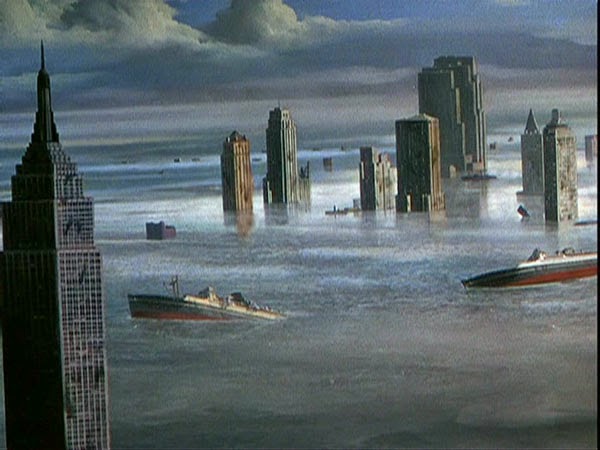On July 2nd, a strange signal from space is picked up on Earth. It soon becomes clear that we are not alone in this universe and that there is life more advanced than us out there. Huge ships begin to descend on he Earth with an even bigger mother ship lurking out in space on the edge of the planet's atmosphere. David Levinson (Jeff Goldblum) analyses the signal to find a code and upon discovering the Earth is about to be under attack, with the help of his ex-wife, he warns the President Tomas J. Whitmore (Bill Pullman) of the incoming danger and they manage to escape before the alien ships lay waste to Washington D.C. with a giant laser weapon. The army attempt to launch a counter attack, but their weapons cannot penetrate the ship's external shields and the majority of the Black Knights flight squadron are killed except for Captain Steven Hiller (Will Smith) who evades attack, forces the alien ship following him to crash, and knocks his attacker unconscious. He delivers the unconscious invader to Area 51 where he meets the President and David and along with help from Dr. Okun's (Brent Spiner) research, they beginning plans on ways to save the Earth. But can they manage it?
The central trio of the film need to be strong enough both on their own, and with one another on screen, and fortunately they are. Will Smith plays the macho, trash-taking, Hiller in true Smith-style. He is cool and everything every man wishes they were. Whilst one could criticise it for being too 'Will Smith' (not an ivalid argument, perhaps), if the main purpose of films is entertainment, then Smith nails it. He is funny, suave, badass, and completely likeable - something that is often missed with macho armed forces characters. Pullman's President is essentially the ideal leader of the United States of America. With authority and an air of calm, he commands his way through unknown threats with visitors from another world. Not only is he smart, he is sacrificial throwing himself into the firing line like a true leader should. Goldblum plays delightful, if not cynical, ex-scientist Levinson. Essentially the lead of the film, he holds his own with gravitas and a brilliant performance, linking all of the different aspects of the plot together. He seamlessly progresses the plot and is hugely entertaining while he does it.
The only real criticism of Independence Day is its runtime at almost two and half hours with plenty of scenes being dragged out just that little bit too long. Aside from this minor flaw, Independence Day is a great example of the alien invasion genre. Huge, ominous spaceships looming over the once great cities and landmarks of our world, silently mocking their pettiness in comparison. The visually imposing nature of the spacecraft on its own its terrifying, but the combination of it with its seemingly unstoppable strength makes it more than scary; it is any person's worst nightmare.
Independence Day is a wonderful genre film, combining sci-fi and action like few others have managed. It is unsurprising that many consider it a 'must-see' film.
Best Bit? The air-force have almost all been wiped out and so anyone with any flight experience is recruited to fight the ships, including the president. But with only small window of time to win the fight, an ultimate sacrifice must be made.













